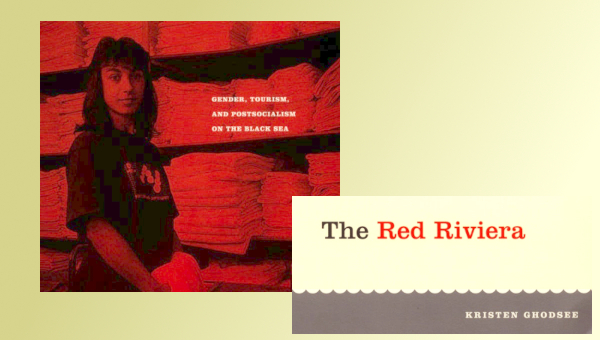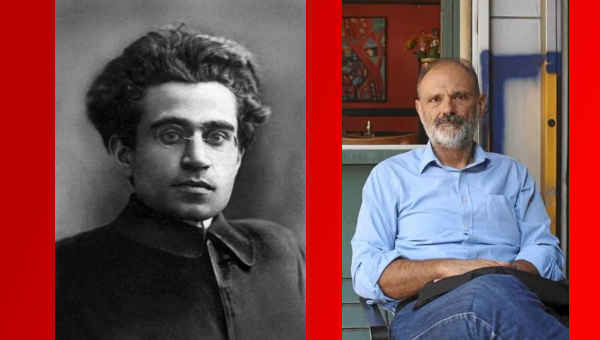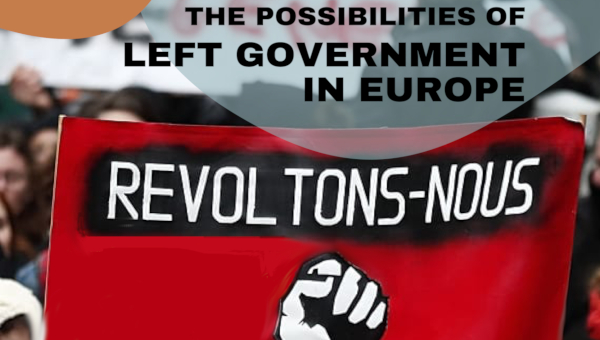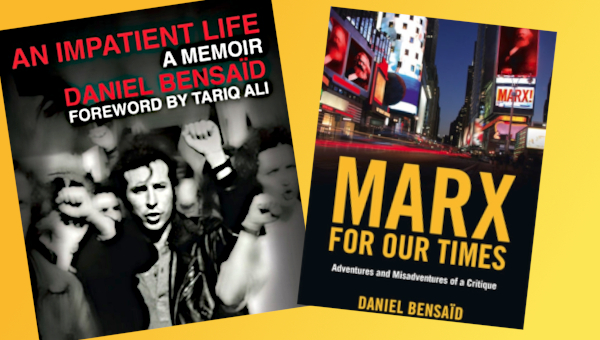Reading Capitalist Realism Ten Years On
Today, in the interregnum of the post-crisis, austerity-driven, global neoliberal capitalist society, we are confronted with a range of contradictions potentially threatening our very way of life on Earth. From looming ecological catastrophes and the threat of the capitalocene, to the rise of artificial intelligence and digital automation threatening stagnation, to refugee crises and culture wars, and even to a resurgence of new economic crises unforeseen by mainstream economists, it would appear as though it is more necessary than ever to challenge the old Thatcherite dogma that “there is no alternative” (TINA) to the existing system. That hopeless, cynical claim that even if capitalism is full of flaws and fissures, it is still the least bad system we’ve got, so grin and bear it…
But resisting this reified and disavowed root of the conundrum in the very capitalism that the TINA formula defends – if we are to confront these problems head on – perhaps it is time for us on the Left to be somewhat more pragmatic about what or how we even envision the future of the post-capitalist world. We need, perhaps, to be much more realistic; but in what sense?
Of Which Realism May We Speak?
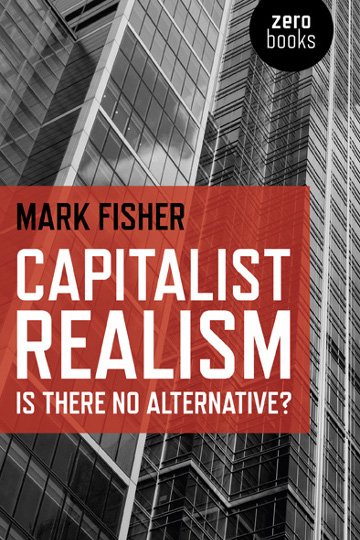
In his commentary on the Brecht-Lukács debate on the aesthetic conflict between modernism and realism in the 1930s, Fredric Jameson proposes that in the context of the rising postmodernism of the late 1970s and early 1980s “it may be Lukács – wrong as he was in the 1930s – who has some provisional last word for us today.”1 But he goes on to claim that if it is Lukács who is to be the retroactive winner in this debate then it comes with a caveat: that the version of realism that Jameson champions in Lukács is one that would be written in the terms of his History and Class Consciousness. That is, the version of realism that Jameson feels most adequate to the task of confronting postmodern capitalism is one expressed through the categories of reification and totality.
The Brechtian “estrangement” no longer carries the same kind of critical weight that it might have had (if it ever really did) in the period of high modernism, or even in the period of new avant-gardes in the post-Structuralist movements of the Tel quel group or the “screen theorists” of the 1970s. Estrangement or distanciation – the radical ideological break with the text and reality – becomes increasingly difficult and limited at the moment of the postmodern colonization of the commodity. When the commodity becomes everything, estrangement as a radical ethics begins to wane. Where there exists nowhere outside of the commodity then no distance is fully attainable or possible.
Jameson concludes by saying in defense of Lukács that he cannot at all suggest which particular conception of realism works best for conceiving our historical present. But he proposes that “the study of realism makes it impossible not to feel the obligation to reinvent one” – that is, to invent a new category of realism.2 What he has in mind here is a conception of realism capable of identifying the totality of our social relations under late capitalism, set within the context of our historical present. A concept of realism, that is, which helps us to locate and understand the reified consciousness of capitalism that is itself set within a rationalist mode according to its own realisms. What we require, according to Jameson, is a concept capable of providing adequate cognitive mapping of our present conditions.
Mark Fisher’s now canonical book, Capitalist Realism, does precisely that; and, it is on the occasion of the tenth anniversary of Mark’s impactful and influential short book that I would like to offer some of my own reflections on Mark’s book and the impression it has left on me.
Reading Mark
Mark’s Capitalist Realism: Is There No Alternative? was published in 2009. When I first read the book, I was just a few short months away from finishing my doctoral thesis on the relevance of Slavoj Žižek for contemporary film theory. I had also been writing about Žižek using a lens largely influenced by Jameson. Readers and celebrants of Mark’s book may therefore find no surprise by the fact that I immediately became enamoured with his book, and for very obvious reasons. I am probably not alone in expressing how impactful Mark’s writing, both in Capitalist Realism, and his subsequent texts – Ghosts of My Life and The Weird and the Eerie – has been on my own more recent work, as well as my cultural and political outlook and sensibilities more generally.3 Like many others, I was shocked and saddened by the news of his sudden passing in January 2017.4 Mark was a critic, theorist, and activist whose voice will truly be missed. These sentiments are only amplified when we read pieces in the recently published and highly acclaimed collection of Mark’s unpublished writings and blog posts, K-Punk, and especially the concluding piece to the collection, Mark’s draft introduction to his final project, Acid Communism.5 Reading the unpublished introduction to Acid Communism we realize that Mark did see forward a realistic vision of life beyond capitalist realism (a Communist Realism), and it is in this vein that a number of relevant projects on the Left are now devoted – that is, the project of what some call luxury communism.6
As readers of course know, Mark begins Capitalist Realism with a nod to Žižek and Jameson – and I probably don’t have to repeat here the phrase which he attributes to both, that “it is easier to imagine the end of the world than the end of capitalism.”7 But as much as this phrase is repeated today it expresses very clearly what Mark had in mind with his conception of “capitalist realism.” Noting that the phrase had previously been used by the art and culture critic, Michael Schudson, to look at the ideological dimensions of advertising – the term contrasts with Socialist Realism – Mark appropriates it to address the rhetorical form of the reigning neoliberal ideology.
Although the book is based on several of Mark’s K-Punk blog posts from around 2005-2008,8 it captures quite well the affective and ideological dimensions of the neoliberal period, especially in the wake of the 2007-2008 financial crisis, in exactly the way that Jameson had hoped for with his vision of postmodern cognitive mapping. In fact, it could be claimed that “capitalist realism” – as a functional worldview – has in some ways become a much more potent ideology following the crisis. For it denotes the widespread sense that there is still no alternative to capitalism, even (or, perhaps, especially so) against the background of constantly looming crises. At the same time, “capitalist realism” offers exactly the kind of cognitive mapping that has helped to solidify and build solidarity around a number of emancipatory projects on the Left even since the crisis. It is almost as if Mark’s naming and pointing the finger at “capitalist realism” allowed radical movements to congeal around a common objective (as opposed to merely subjective) enemy found within the relations of capitalist exploitation.
Žižek writes in First as Tragedy, Then as Farce that the first decade of the twenty-first century was marked by the bookended events of nine-eleven and the financial credit crisis of 2008.9 The first occurred midway through my undergraduate studies; the second occurred midway through my doctoral studies. It was the first event that initially opened for me a global crisis in the liberal worldview and drew me to the Marxist critique of ideology, as well as to several activist circles in Toronto for various different causes on the Left; but it was with the second that my comprehension of the inherent structural contradictions of capitalism was honed. Capitalist Realism was for me, then, quite timely. Mark’s book spoke to me in a way that I’d not identified in anything else I’d read previously. It provided a real sense of the kind of cognitive mapping needed for me to face the crisis. It is a book that has only radicalized my worldview even further.
Reading Capitalist Realism for the first time, I felt an overwhelming affinity toward Mark. I had read posts from his K-Punk blog a few times prior, but at that point remained largely unfamiliar with his writing. Capitalist Realism is a product of what Jeremy Gilbert has called Mark’s Žižek-Lacan period, and it is quite clear that even in his conception of capitalist realism – that is, as a critical-ideological concept – Žižek’s earliest theories of ideology shine through.10
But it wasn’t only in his uses of Žižek and Jameson that I felt inspired by Mark. It was of course, as many will still share, his style and manner of expression: his seamless and cogent prose; his practice of mixing theory and fiction (or “Theory-Fiction,” which we find even early on in his doctoral thesis, Flatline Constructs);11 his references to popular culture, electronic music, sci-fi, and cyberpunk; as well as his astute writing about the interpassive and jacked-in dimensions of new media, and the somnambulist trance of late modern (or postmodern) “sugar-coated” and caffeine-drenched, greasy and hyper-stimulated screen culture of twenty-first century capitalism, that drew me into his unique way of expressing and visualizing the most deleterious yet mesmerizing aspects of our present. There was a youthful and angsty, yet contemporary aspect to his writing – the kind I’d felt the first time I listened to Nirvana; Mark’s writing on Kurt Cobain, of course, in the opening pages of Capitalist Realism, also clearly pulled me in further. Reading Mark’s book was, for me, an experience like reading punk sci-fi. It was Cyberpunk as theory.
Recently re-reading Benjamin’s essay, “Paris: Capital of the 19th Century,” I was struck by how much it reminded me of Mark. Mark’s writing about digital and popular culture certainly has a Benjaminian quality to it, and Capitalist Realism has become part of the twenty-first century cultural zeitgeist in the same way that Benjamin’s artwork essay had in the century prior. In it, Mark combines the kind of intrigue we find in Benjamin’s writing about his book collection with even the shrewd awareness that Guy Debord brought to the level of appearances in the capitalist spectacle. Mark harkens back slightly to the pessimism of Adorno and Marcuse’s Freudo-Marxism, not to mention the gothic materialism of Deleuze and Guattari, but still, in the end, presents the kind of utopianism we now might identify with the neo-Communist projects of Jodi Dean, Hardt and Negri, Alain Badiou, and a range of Left accelerationists. Through the text, Mark appears as a modern day flâneur – one suited to the age of the internet. Rather than strolling through the Paris Arcades, Mark presented with keen precision the contours of the virtual public-private-commercial spaces of modern day communicative capitalism. Capitalist Realism displays his ability to synthesize the abstract lenses of Theory with the practical and performative contradictions of neoliberalism, making his descriptions feel eerily familiar (and at times all too… well… real) to his readers.
Since my first encounter with Capitalist Realism I have not been able to read or interpret anything else in the aesthetic dimension or the political-ideological register without a copy of the book by my side. TV series like Charlie Brooker’s Black Mirror (2011-) and Sam Esmail’s Mr. Robot (2015-), music, such as Father John Misty’s Pure Comedy (2017), and recent films like Denis Villeneuve’s Blade Runner 2049, all seem like they would be inconceivable before Capitalist Realism, and it is no doubt that the book bears an influence in my own writing on these texts. Over the past decade, I’ve found myself returning to the book, not only for the pleasure of the text, but also because of the way he so magnificently blended and developed his own critical concepts, which he used to unearth some of the major ideological conundrums we now face. The book clearly demonstrates his acuity for theorizing the new, and for writing theory, not as something simply to be studied, but also as something to be enjoyed.
Mapping Capitalist Realism
Part of this enjoyment lies in Mark’s ability to name and coin new terms and concepts useful in the arsenal of contemporary critical theory, capable of bringing aesthetic rigour to our envisioning of the problem. This is a trait that we find in Capitalist Realism, as well as across his entire oeuvre. Beginning, even, with “capitalist realism,” itself, as a term that names the ideological predicament of the cynical realism of the present, Mark also identified two of the central intersecting and contradictory dimensions of our times. What he calls “reflexive impotence” and “depressive hedonia” identify the psychological dead-ends of neoliberal capitalism. What he describes is the condition of those subjects tied up to the postmodern vision of the “end of history” or the “end of the world” (which it seems easier to imagine than…). Reflexive impotence and depressive hedonia describe the affective dimensions of the postmodern “demise of symbolic efficiency” or the “breakdown of the signifying chain,” described by Žižek, Jameson, and Dean, coupled with the consumerist logic of endless pleasure and the superego injunction to “Enjoy!,” as well as a strong sense of the Deleuzian control society embedded in our everyday way of living the perpetual present of the digital culture. People, today, see no future toward which they can strive, and because of this the more we are enjoined to enjoy the more we feel depressed, anxious, and stressed out of our minds.
Alongside these psychological conditions, Mark identifies the contradictory forms of “market Stalinism” designed around a “business ontology.” The dilemma here is that, according to its rhetoric, neoliberalism was meant to do away with state bureaucracy, leaving everything up to the invisible hand of the market. However, instead, bureaucratic mechanisms, like extreme internal auditing culture, did not disappear; rather, they have proliferated in the interests of supporting a business agenda. Just as Boltanski and Chiapello have shown in their New Spirit of Capitalism, or more recently in Leigh Phillips and Michal Rozworski’s People’s Republic of Walmart, the mechanisms of domination have not gone away under the market fundamentalism of neoliberalism. Domination and bureaucracy have simply proliferated horizontally and rhizomatically. Despite claims regarding the demise of the big Other, the Lacanian Symbolic order, auditing culture, for instance, and the proliferation of information as public relations, the context of a largely cynical and ironic public only attests to the continued existence of this agency (the big Other) as the only virtual regulator of our common culture.
Mark’s inspiring conclusion was thus to return to grand narratives apparently swept under the rug by postmodern criticism. Grand narratives like Marxism provide adequate cognitive mapping for our present conditions – here we can re-posit the Symbolic order through the mechanism of critical and interrogative historical interpretation. This is a project that I see continued in Mark’s controversial essay, “Exiting the Vampire Castle,” as well as the draft introduction to Acid Communism. Mark’s later writings pivot in this direction, to solve, first, the problem in capitalist realism of the variety of cynical resignations leading to reflexive impotence and depressive hedonia. Then, second, we need to, he suggests, reconceive political action according to the specific techno-bureaucratic context of post-Fordist market Stalinism. What we require, in other words, is a new Communist realism.
Ten Years On
Mark’s talent to recognize and identify both the limits to emancipatory politics, but also to envision a desire to transcend these limits is what makes both this book and his own legacy so revealing and liberating. As the book shows, the foundations for a new world are already with us, and the only thing preventing their realization are the political and ideological constraints that preserve the plenty for the few. In honour of Mark’s work, and the legacy of Capitalist Realism, perhaps it is time (because we haven’t got any left) to make the realism of communist desire our rallying call against the reified realism of capital. •
This article is a modified version of Matthew Flisfeder’s Introduction to an edited dossier commemorating the tenth anniversary of Capitalist Realism, published in Mediations: Journal of the Marxist Literary Group. The dossier includes contributions from Jodi Dean, Benjamin Noys, Leigh Claire La Berge, Kai Heron, and Dan Hassler-Forest.
Endnotes
- Fredric Jameson, “Reflections in Conclusion.” In Theodor Adorno, et. al. Aesthetics and Politics (New York: Verso, 2007), p. 212.
- Jameson, “Reflections,” p. 213
- Fisher, Ghosts of My Life (Winchester, UK: Zero Books, 2014); Fisher, The Weird and the Eerie (London: Repeater Books, 2017).
- Although the purpose of this dossier is to commemorate the tenth anniversary of Capitalist Realism, it is difficult not to at the same time want to eulogize Mark. Interested readers are directed to read some of the following eulogies and op-eds about Mark and his legacy in the following sources: “In Memorium: Mark Fisher,” Los Angeles Review of Books. March 11th, 2017. Viewed March 17th, 2019; Simon Reynolds, “Mark Fisher’s K-Punk Blogs Were Required Reading for a Generation.” The Guardian. January 18th, 2017. Viewed March 17th, 2019; Nina Power, “In Memorium: Mark Fisher, January 13th.” Nina Power. January 13th, 2017. Viewed March 17th, 2019.
- Fisher, K-Punk: The Collected and Unpublished Writings of Mark Fisher (London: Repeater Books, 2018).
- See also the published conversation between Mark and Judy Thorne, “Luxury Communism: A Conversation Between Judy Thorne and Mark Fisher.” In Futures and Fictions, edited by Henriette Gunkel, Ayeesha Hameed, and Simon O’Sullivan (London: Repeater Books, 2017).
- This line was first iterated by Jameson in The Seeds of Time (New York: Columbia University Press, 1994), p. xii – “It seems to be easier for us today to imagine the thoroughgoing deterioration of the earth and of nature than the breakdown of late capitalism.” Žižek later, in reference to Jameson, writes that “it seems easier to imagine the ‘end of the world’ than a far more modest change in the mode of production, as if liberal capitalism is the ‘real’ that will somehow survive even under conditions of global ecological catastrophe.” Žižek, “The Spectre of Ideology.” In Slavoj Žižek, ed., Mapping Ideology (New York: Verso, 1994), p. 1.
- See K-Punk, op cit.
- Žižek, First as Tragedy, Then as Farce (New York: Verso, 2009), p. 1.
- Jeremy Gilbert, “My Friend Mark.” Viewed March 13th, 2019.
- Fisher, Flatline Constructs: Gothic Materialism and Cybernetic Theory-Fiction (New York: Exmilitary Press, 2018).


